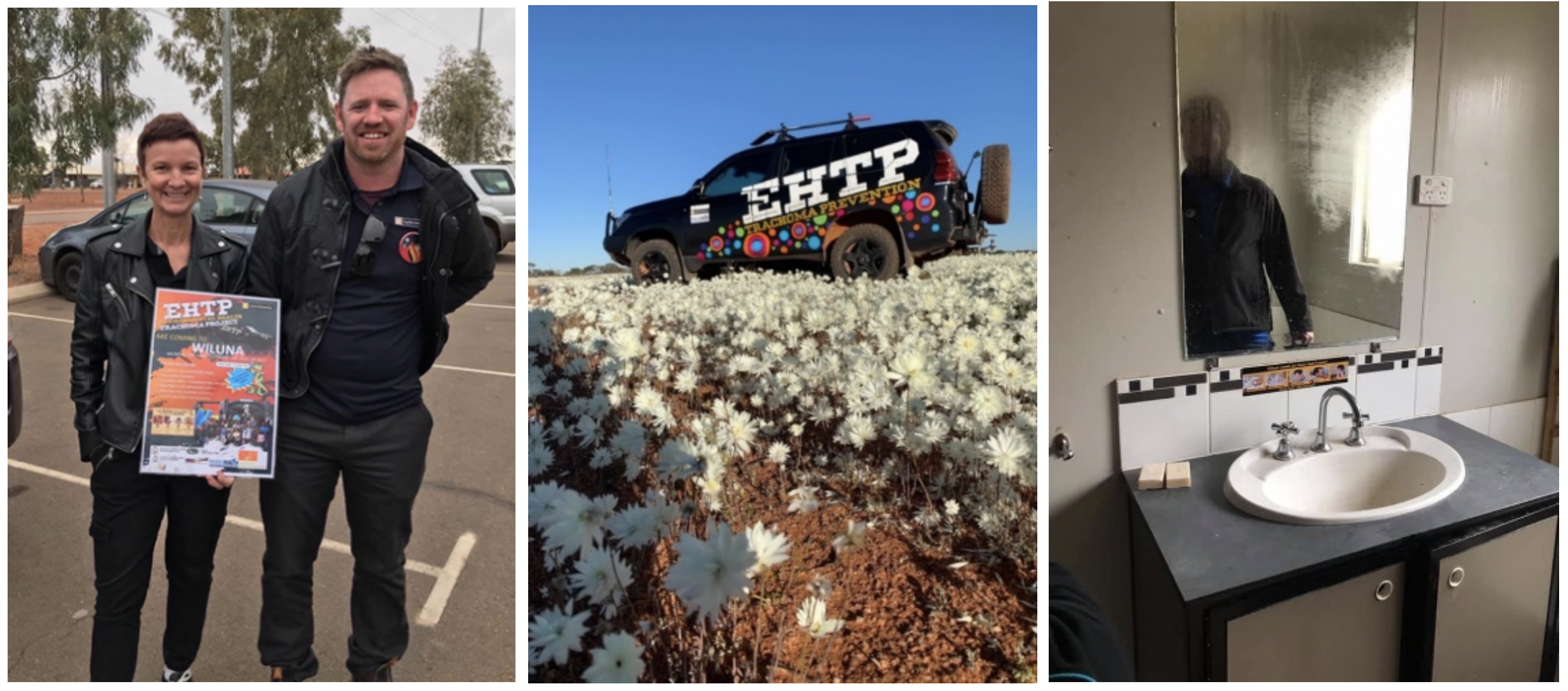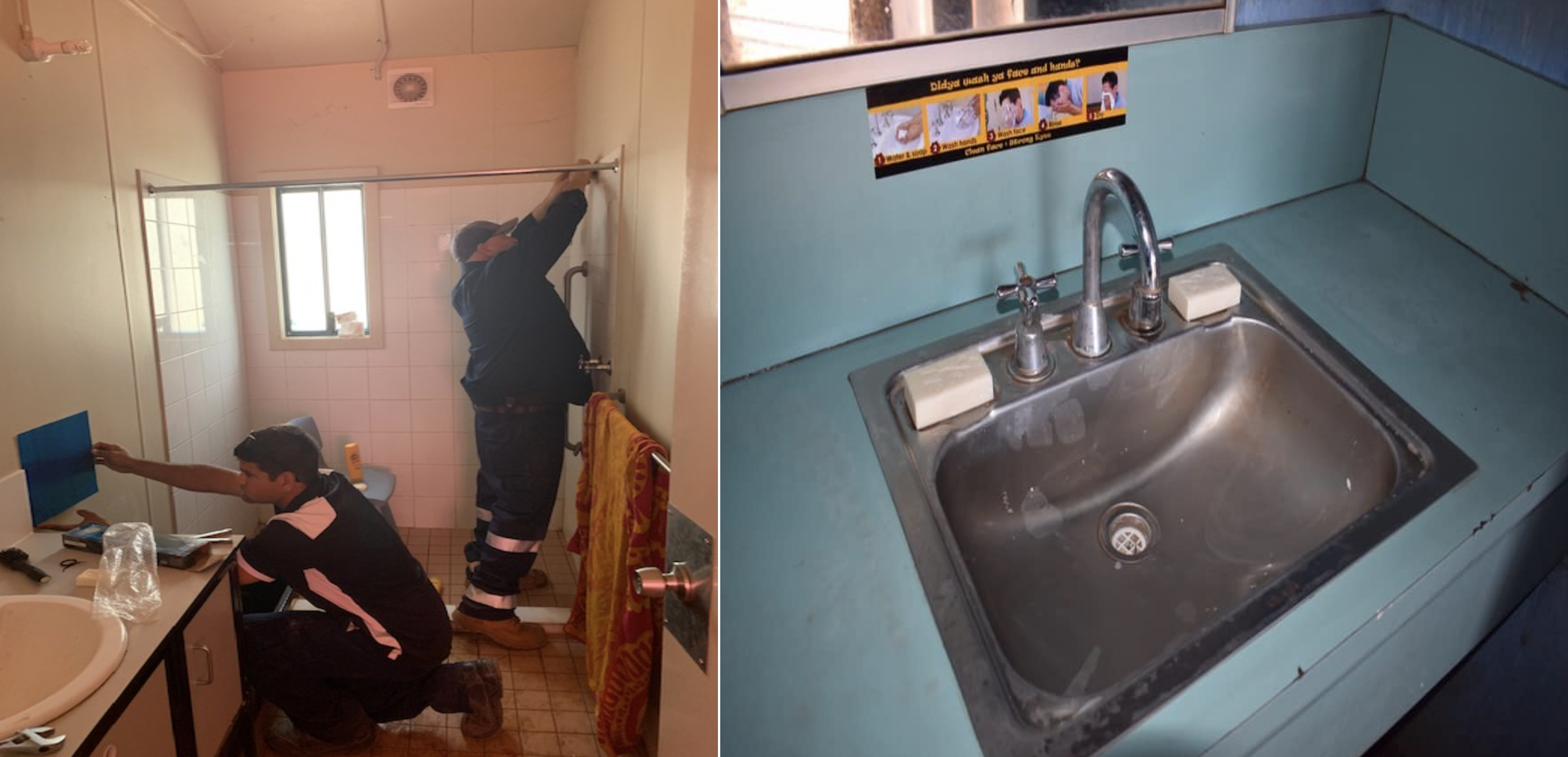Trachoma is the leading cause of preventable blindness globally. Based on reporting by the WHO in 2018, trachoma remains endemic in 41 countries.
This 'Share Your Story' was written by Dr Mel Stoneham and Scott MacKenzie, #endingtrachoma project team, Curtin University.
BACKGROUND
Australia is the only developed country to have endemic trachoma. This is alarming. But it gets worse - almost all the cases of trachoma are detected in remote Aboriginal communities.
Figure 1 indicates the prevalence of trachoma in Australia.

Image: Figure 1 - Overall trachoma prevalence in children aged 5-9 years in all at-risk communities by region, Australia 2018 (Kirby Institute 2019)
The Environmental Health Trachoma Project (#endingtrachoma) aims to reduce the incidence of trachoma and skin infections in ‘trachoma at risk’ Aboriginal communities in remote WA through environmental health strategies by December 2021. We do this through a combination of long term planning with communities and hands on service provision and our key partners are the Aboriginal Environmental Health Workers who are employed within remote communities.
Why Trachoma?
Trachoma easily spreads from one person to another through infected eye and nose secretions. It can be prevented by reducing risk factors such as poor hygiene and overcrowding.
The World Health Organisation (WHO) has set the goal of eliminating trachoma by 2020. In 2018, the national committee for trachoma control recommended that the current screening and treatment programs need to be complemented by enhanced activity in the areas of health hygiene promotion and environmental improvements to achieve trachoma elimination. Our project is funded under this remit.
About #endingtrachoma
The #endingtrachoma project is run out or the Public Health Advocacy Institute of WA (PHAIWA) which is affiliated with Curtin University. It aligns with the WHO SAFE strategy, consisting of the following control measures: Surgery; Antibiotics; Facial cleanliness; and Environmental improvements (WHO).

Image: Mel and Scott from #endingtrachoma
The #endingtrachoma project primarily focuses on the E and F strategies. Trachoma is a community disease clustered by individual families rather than a series of isolated cases. We know that poor hygiene, overcrowding and a lack of functional bathrooms and laundries contribute to trachoma. It seems sensible to address these issues through an environmental health lens. The #endingtrachoma project is doing just that.
Nationally, 120 remote Aboriginal and Torres Strait Islander communities were identified as at risk of endemic trachoma, and 40 of these are located in WA (Kirby Institute 2019). Our team aims to visit each of these WA communities at least once a year over the four years.
The project partners with the Environmental Health Directorate (WA Health), regional Public Health Units and the community based Aboriginal Environmental Health Workers (AEHWs). We also link with the Indigenous Eye Health at the University of Melbourne, the Squeaky Clean Kids project, the Fred Hollows Foundation, Rotary Australia, #ENDRHD and PHAIWA.
The long term goal is to support the development of Community led Environmental Health Action Plans (CEHAP) which will identify and plan for sustainable and realistic trachoma prevention strategies, housed within a broader environmental health context. To do this we are collecting baseline data on infrastructure, existing programs, partnerships and gaps. Once developed or amended, the CEHAP will guide the environmental health initiatives and actions delivered in remote communities, many of which focus on hygiene and environmental health infrastructure.
We also work with our partners to identify any “hot spot” communities which may correlate with criteria such as high trachoma screening results or motivation to act. We collaborate and consult with all the partners and the communities to identify any key F and E strategies that could assist in reducing trachoma and other hygiene related illnesses. The strategies vary and are linked with the findings from the baseline data. Key messages within the #endingtrachoma project focus on prevention, hygiene and the importance of functional health hardware.
An important part of our project is working with community. A recent example was in a Goldfields community where audits of people’s private bathrooms conducted by the AEHWs revealed many plumbing issues which were preventing families from practising good hygiene. The #endingtrachoma team worked with the plumbing contractors employed by Housing to coordinate a community visit while we were in community. As people’s bathrooms and drainage were being fixed by the contractors, our team together with the AEHWs, installed mirrors at the height of a child, towel hooks, provided free soap and installed hand and face washing stickers. We also took the opportunity to have a chat about the importance of hygiene and hand and face washing and checked out whether there was a working washing machine and clothes line. This was all achieved within people’s homes and as we provided culturally appropriate services, led by the local Aboriginal Environmental Health Worker, we were not denied access into any homes. At the end of that week, we had rectified 88 plumbing issues for the 46 houses checked. It was a great outcome not only for community members but also for Housing, as the consolidation of identifying issues and providing remediation services together with healthy messages, saved money, ensured consistent messaging and highlighted the importance of prevention.
Although the team collect some data to assist with the CEHAP when we visit communities, we also want to give back. When the team visits each communities to gather the information needed for the CEHAP, we provide a community event where we can engage with the community and in the interests of reciprocity, thank them for hosting the #endingtrachoma team. It is not the aim of this engagement event to change behaviour but to thank the community and provide an opportunity to build the capacity of the Aboriginal Environmental Health Workers on how to organise and run a community event. The events include a community BBQ, a movie night and child focused activities. We use these activities to thank communities for hosting us. As part of this event, we ask children to wash their face before going on the jumping castle. We also ask community members to wash their hands with soap before they enjoy a burger. These are great opportunities to increase awareness and skills around hand and face washing and reinforces the key messages of other trachoma and hygiene programs. Below are some photos from a recent visit.


The #endingtrachoma project has also developed two trachoma advertisements which have been designed to run before and after the community movie night…just as a reminder about what we are trying to achieve in communities. We used our own AEHWs as many of the actors.
Capacity building of the AEHWs is another important component of the project. We conducted a training needs analysis and have begun to develop and deliver a range of skills based training packages to the workforce.
During the last year of the project, the team will do a final visit to all communities to collect post-intervention data using the same form as the pre-intervention to enable comparison. We will also compare trachoma screening data over the project timeframe, evaluate the CEHAP successes and challenges and collate the data from the community projects.
You can read more about the project here: https://www.phaiwa.org.au/endingtrachoma/
References:
The Kirby Institute (2019). Australian Trachoma Surveillance Report 2018. (accessed 14 January 2020)
WHO (1999). Report of the Third Meeting of the WHO Alliance for the Global Elimination of Trachoma, Ouarzazate, Morocco, 19–20 October 1998 (unpublished document WHO/PBL/GET/99.3) Geneva, World Health Organization, 1999. Accessed 10 November 2019.
If you have any questions relating to this ‘story’ please contact Dr Mel Stoneham and Scott MacKenzie – #endingtrachoma project team Curtin University via email M.Stoneham@curtin.edu.au or by telephone 0421 113 580.
This 'Share your Story' article was published 14 May 2020.